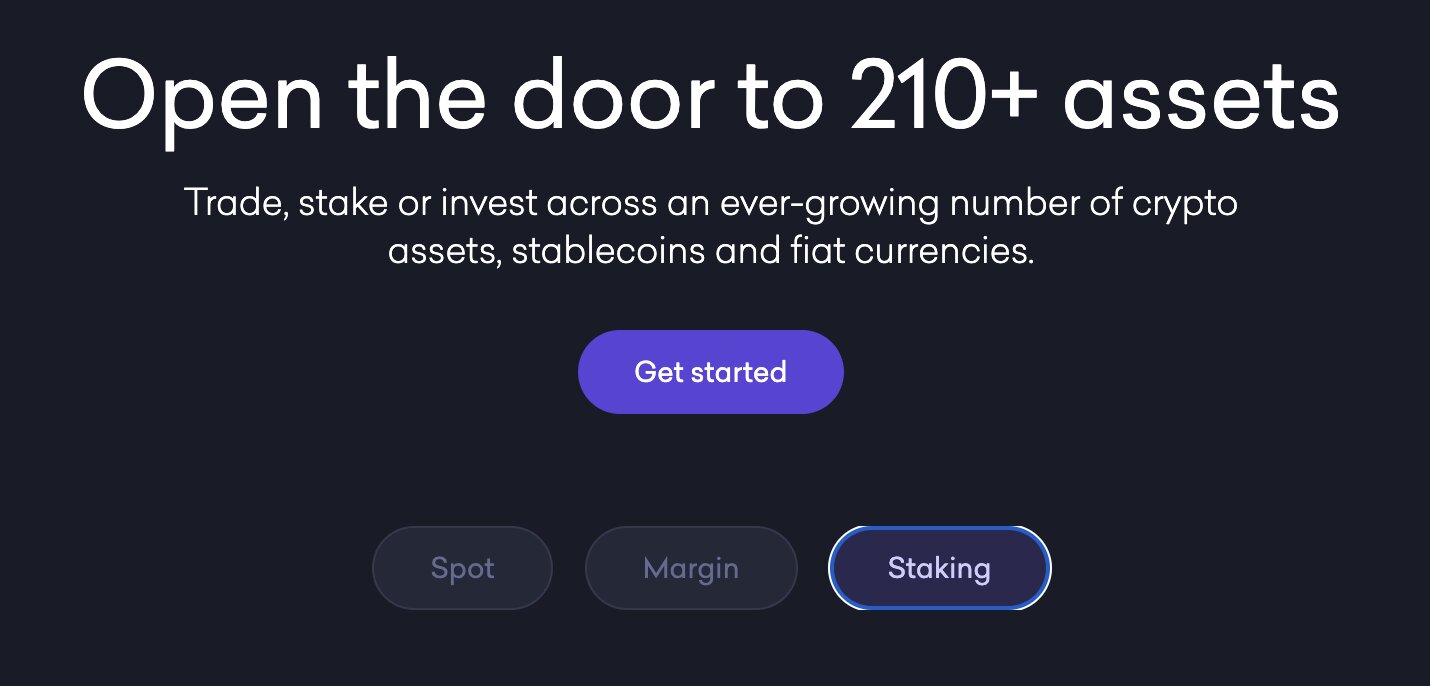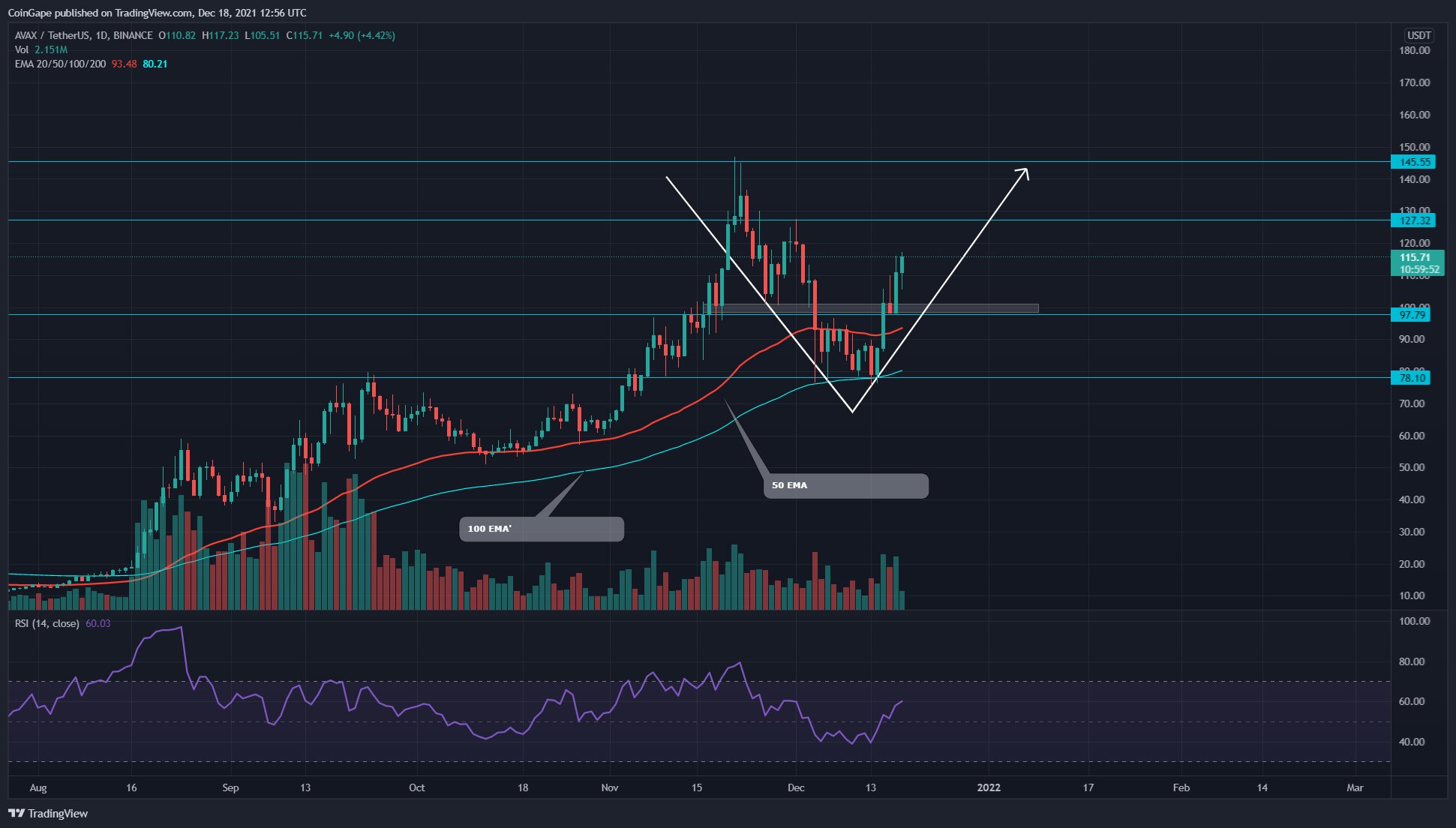Introduction
Investing in cryptocurrencies has become increasingly popular in recent years, with many individuals seeking to diversify their portfolios and capitalize on the potential growth of these digital assets. While traditional trading and holding strategies have been the norm, an alternative method known as staking has gained traction in the crypto community.
Staking, in simple terms, refers to the process of actively participating in the validation and verification of cryptocurrency transactions on a blockchain network. By doing so, participants can earn staking rewards as an incentive for their contribution to the network’s security and overall functionality.
This article will explore the concept of staking and its benefits, as well as provide an overview of popular staking platforms for various cryptocurrencies. Additionally, we will discuss important factors to consider before staking your crypto assets, the different types of staking rewards, and the potential risks involved.
Staking offers crypto investors an opportunity to passively earn additional tokens or coins by simply holding and supporting the network. Unlike mining, which requires expensive hardware and substantial energy consumption, staking provides a more energy-efficient and accessible way to participate in blockchain validation.
As the cryptocurrency market continues to evolve, staking has become an attractive option for those looking to put their idle tokens to work and generate a steady stream of income. However, it is essential to understand the intricacies of staking before diving in, as not all cryptocurrencies offer staking capabilities, and the associated risks should be carefully evaluated.
In the following sections, we will delve deeper into the benefits of staking, the considerations for choosing a staking platform, and the potential rewards and risks involved in this fascinating aspect of the crypto world.
What is Staking?
Staking is a process that involves actively participating in the validation and verification of cryptocurrency transactions on a blockchain network. It serves as an alternative to the energy-intensive mining process, allowing individuals to earn rewards by holding and securing their cryptocurrency assets.
When it comes to staking, the concept revolves around Proof-of-Stake (PoS) consensus algorithms. Unlike Proof-of-Work (PoW), which requires miners to solve complex mathematical problems to validate transactions, PoS relies on network participants, known as validators, to secure the network based on the number of coins they hold and “stake.”
By staking cryptocurrency, individuals commit a certain amount of their tokens as collateral, signaling their intent to support the network’s operations. In return, they become eligible to participate in the consensus mechanism and verify transactions. Validators are chosen to add new blocks to the blockchain based on a selection process that considers factors such as the amount of coins staked and time held in the network.
Staking provides several advantages over traditional mining. It requires significantly less computational power and energy consumption, making it more eco-friendly. Additionally, staking allows for a more decentralized network, as anyone holding the requisite coins can participate as a validator and contribute to securing the blockchain’s integrity.
Moreover, staking offers investors a passive income stream. As validators confirm transactions and secure the network, they earn staking rewards, typically in the form of additional tokens or coins. These rewards are distributed in proportion to the amount of coins staked, incentivizing individuals to hold and support the network over the long term.
It is important to note that staking is not without its risks. While validators are rewarded for their participation, they also face the possibility of losing a portion or all of their staked tokens if they fail to follow the network’s protocol or participate in malicious activities. Therefore, it is crucial to carefully choose a reputable staking platform and thoroughly evaluate the associated risks before staking your crypto assets.
In the next sections, we will explore the benefits of staking crypto in more detail and discuss the factors to consider before engaging in this rewarding process.
The Benefits of Staking Crypto
Staking crypto assets offers several compelling benefits for investors and participants in the blockchain ecosystem. Let’s explore some of the key advantages of staking:
1. Passive Income Generation
Staking provides an opportunity to earn a passive income stream by simply holding and securing your cryptocurrency assets. As a validator, you receive staking rewards in the form of additional tokens or coins for contributing to the network’s security and consensus process. This passive income can be a valuable source of regular earnings in the volatile world of cryptocurrency.
2. Lower Energy Consumption
Unlike traditional mining, which requires substantial computational power and energy consumption, staking is a more energy-efficient process. It operates using the Proof-of-Stake (PoS) consensus algorithm, which relies on validators staking their tokens rather than solving complex mathematical puzzles. This makes staking a more sustainable and environmentally friendly option for participating in blockchain networks.
3. Increased Network Security
Staking plays a crucial role in securing blockchain networks. Validators who hold a significant stake in the network have a financial incentive to act honestly and maintain the integrity of the system. This increases the network’s security and resilience against potential malicious attacks or manipulation attempts.
4. Network Governance and Voting Rights
By staking your crypto assets, you often gain the ability to participate in the governance of the network. Some staking platforms offer voting rights to validators, allowing them to have a say in protocol upgrades, network proposals, and other important decisions. This gives stakeholders a voice in shaping the direction of the blockchain project they have invested in.
5. Potential for Capital Appreciation
Aside from earning staking rewards, staking your crypto assets may also provide the opportunity for capital appreciation. Many blockchain projects have limited token supplies, and as demand increases, the value of the tokens can rise. By staking and holding these tokens, you may benefit from their price appreciation over time.
6. Diversification of Investment Strategy
Staking offers a way to diversify your investment strategy within the crypto market. While holding and trading coins can be profitable, staking adds an additional dimension by enabling you to earn passive income on top of potential price appreciation, effectively maximizing your returns.
These benefits make staking an appealing option for investors looking to earn a passive income, contribute to network security, and play an active role in blockchain governance. However, it is important to consider the various factors and risks involved before diving into staking.
In the following sections, we will discuss the considerations you should weigh before staking your crypto assets and explore popular staking platforms for different cryptocurrencies.
Factors to Consider Before Staking Crypto
Before staking your cryptocurrency assets, it is crucial to carefully consider several factors to ensure a successful and informed staking experience. Let’s explore some key considerations:
1. Reputation and Security of the Staking Platform
One of the most important factors to consider is the reputation and security of the staking platform you choose. Conduct thorough research and only stake your assets on trusted platforms with a proven track record of security and reliability. Look for platforms that have implemented robust security measures, such as two-factor authentication and cold storage for funds.
2. Supported Cryptocurrencies
Not all cryptocurrencies support staking. Before staking, ensure that the cryptocurrency you hold or intend to acquire offers staking capabilities. Some of the popular cryptocurrencies that support staking include Ethereum, Cardano, Tezos, and Polkadot. Check the official documentation or reach out to the project team to confirm their staking options.
3. Staking Requirements
Each staking platform may have different requirements and minimum stake amounts. Consider the minimum staking requirement and evaluate if it aligns with your investment plan. Additionally, be aware of any lock-up period associated with staking, as some platforms may lock your funds for a certain period before allowing you to withdraw.
4. Staking Rewards and Fees
Examine the staking rewards offered by the platform and compare them across different options. Higher staking rewards may be attractive, but ensure that the platform is sustainable and not promising unrealistic returns. Additionally, be aware of any fees associated with staking, such as network fees or platform fees, as they can impact your overall returns.
5. Network Consensus Mechanism
Understand the consensus mechanism of the cryptocurrency network you are considering to stake. Different cryptocurrencies may use different consensus algorithms, such as Proof-of-Stake (PoS) or Delegated Proof-of-Stake (DPoS). Evaluate the security, decentralization, and efficiency of the consensus mechanism to make an informed decision.
6. Technical Knowledge and Infrastructure
Consider your technical knowledge and the infrastructure required to stake. Some staking platforms may require running a node or maintaining a reliable internet connection and hardware. Assess if you have the necessary skills and resources to participate effectively in the staking process.
7. Risks and Rewards
Staking carries certain risks, including the potential loss of staked assets due to protocol vulnerabilities or validator misbehavior. Evaluate the risks associated with staking and ensure you are comfortable with them. Additionally, consider the potential rewards and calculate the potential return on your investment before staking your assets.
By carefully considering these factors, you can make informed decisions when choosing a staking platform and successfully stake your crypto assets. In the next section, we will explore popular staking platforms for different cryptocurrencies, providing you with options to consider for your staking endeavors.
Staking Platforms for Popular Cryptocurrencies
As the popularity of staking continues to grow, there are several staking platforms available for various cryptocurrencies. Let’s explore some popular staking platforms and the cryptocurrencies they support:
Ethereum 2.0
Ethereum 2.0, also known as Eth2 or Serenity, is an upgrade to the Ethereum blockchain that introduces a Proof-of-Stake (PoS) consensus mechanism. Staking on Ethereum 2.0 involves holding a minimum of 32 ETH and becoming a validator. Some popular staking platforms for Ethereum 2.0 include Rocket Pool, Lido Finance, and Staked.
Cardano
Cardano is a blockchain platform that utilizes its unique Proof-of-Stake (PoS) consensus algorithm called Ouroboros. ADA holders can delegate their ADA to a stake pool or become a pool operator to participate in the staking process. Notable staking platforms for Cardano include Daedalus Wallet, Yoroi Wallet, and ADApools.
Tezos
Tezos is a self-amending blockchain platform that uses a Proof-of-Stake (PoS) consensus algorithm. Staking on Tezos involves delegating XTZ tokens to a baker (validator) to participate in the consensus process and earn rewards. Popular staking platforms for Tezos include Coinbase, Kraken, and Tezos Baking.
Polkadot
Polkadot is a multi-chain platform that enables the transfer of any type of data or asset across different blockchains. Staking DOT tokens on Polkadot allows holders to act as validators or nominate validators to secure the network. Notable staking platforms for Polkadot include Polkawallet, Polkadot.js, and Kraken.
Cosmos
Cosmos is an interoperable blockchain platform that uses a Tendermint Proof-of-Stake (PoS) consensus algorithm. Staking ATOM tokens on Cosmos involves participating in the network’s governance and secure consensus process. Popular staking platforms for Cosmos include Ledger, Trust Wallet, and Figment Networks.
VeChain
VeChain is a blockchain platform focused on supply chain management and enterprise solutions. Staking VET tokens on VeChain allows holders to generate VTHO tokens, which are used to power transactions on the network. Notable staking platforms for VeChain include the official VeChainThor Wallet and Veforge.
These are just a few examples of staking platforms for popular cryptocurrencies. It is important to conduct thorough research, consider the platform’s reputation, security, staking requirements, and rewards before choosing a platform to stake your crypto assets.
In the next section, we will discuss how to choose a staking platform that aligns with your needs and preferences, ensuring a smooth and successful staking experience.
How to Choose a Staking Platform
Choosing the right staking platform is crucial to ensure a secure and rewarding staking experience. Here are some important factors to consider when selecting a staking platform:
1. Reputation and Security
Prioritize platforms with a solid reputation and a proven track record of security. Look for platforms that have implemented robust security measures such as two-factor authentication, encryption, and cold storage for funds. User reviews and community feedback can also provide valuable insights into a platform’s reliability.
2. Supported Cryptocurrencies
Make sure the staking platform supports the cryptocurrency you intend to stake. Check the list of supported cryptocurrencies and ensure that your desired coin is included. Some platforms may offer a wide range of staking options, allowing you to diversify your staked assets.
3. Staking Requirements
Consider the staking requirements of the platform. Evaluate the minimum stake amount, any lock-up period for staked funds, and any additional requirements that need to be met. Ensure that the staking requirements align with your investment plan and capabilities.
4. User Interface and Experience
Evaluate the user interface and experience of the staking platform. A user-friendly platform with intuitive navigation and clear instructions can make the staking process smoother and more enjoyable. Look for platforms that provide a seamless and hassle-free user experience.
5. Staking Rewards and Fees
Compare the staking rewards offered by different platforms. While higher staking rewards can be enticing, make sure they are sustainable and not too good to be true. Take into account any fees associated with staking, such as network fees or platform fees, as these can impact your overall returns.
6. Community and Support
Consider the strength of the platform’s community and the availability of customer support. Active and engaged communities can be a valuable resource for learning and troubleshooting. Additionally, responsive customer support can provide assistance when needed.
7. Transparency and Communication
Look for staking platforms that prioritize transparency and regular communication with users. Platforms that provide clear information about their operations, updates, and upcoming features inspire trust and confidence among stakeholders.
By considering these factors, you can choose a staking platform that meets your requirements and enhances your staking experience. Remember to do thorough research, read user reviews, and seek recommendations from trusted sources before committing your assets to any staking platform.
In the next section, we will explore the different types of staking rewards and how they can impact your staking journey.
The Different Types of Staking Rewards
When staking your crypto assets, you have the opportunity to earn various types of rewards. Understanding the different types of staking rewards can help you make informed decisions and maximize your staking returns. Let’s explore the most common types of staking rewards:
1. Staking Rewards
The most straightforward type of staking reward is the staking reward itself. Validators or stakers earn additional tokens or coins as a reward for participating in the network’s consensus mechanism and securing the blockchain. These rewards are typically distributed in proportion to the number of coins staked by the validator.
2. Inflationary Rewards
Some cryptocurrencies have an inflationary model, where new tokens or coins are created and distributed to stakers as an inflationary reward. These rewards are given to incentivize network participation and compensate for the increased token supply. Validators can earn a portion of the newly minted tokens based on their stake in the network.
3. Transaction Fees
In many blockchain networks, transaction fees are collected and distributed to validators as an additional reward for processing and validating transactions. Validators with higher stakes or those who process a higher volume of transactions receive a larger share of the transaction fees. This can be a significant source of additional income, especially in high-transaction networks.
4. Governance Rewards
Some blockchain networks allow stakers or validators to participate in the governance of the network. This participation may involve voting on important proposals or decisions, such as protocol upgrades or fund allocation. Validators who actively participate in governance can earn governance rewards as an incentive for their contribution to the network’s decision-making process.
5. Delegation Rewards
In certain Proof-of-Stake (PoS) networks, stakers can delegate their tokens to validators without running their own validator nodes. In return, they receive a portion of the staking rewards earned by the validator, known as delegation rewards. Delegation rewards allow investors with smaller amounts of stake to passively earn staking rewards without the technical complexities of running a validator node.
6. Loyalty Rewards
Some staking platforms offer loyalty rewards to users who stake their assets for an extended period. These rewards are often provided as an incentive for long-term staking and can come in the form of additional staking rewards, discounted fees, or other benefits. Loyalty rewards encourage users to maintain their stake and exhibit commitment to the network.
It’s important to note that the specific types of staking rewards and their distribution mechanisms vary across different cryptocurrencies and staking platforms. Before staking, research the rewards structure of the particular cryptocurrency or platform you are interested in and understand how your rewards will be calculated and distributed.
In the next section, we will discuss the potential risks and considerations associated with staking your crypto assets.
Risks and Considerations of Staking Crypto
While staking crypto assets can be a rewarding endeavor, it is important to carefully evaluate the risks and considerations associated with staking. Here are some key factors to keep in mind:
1. Network Risks
Staking involves actively participating in the validation and security of a blockchain network. It is crucial to assess the robustness of the network and its consensus mechanism. Consider the potential risks of protocol vulnerabilities, attacks, or forks that could lead to the loss of staked assets.
2. Impermanent Loss
Impermanent loss is a risk specific to liquidity pool staking, where the value of the tokens in the pool fluctuates relative to each other. If the relative value of the tokens changes significantly, liquidity providers may experience losses when withdrawing their funds. Understand the dynamics of the liquidity pool and the potential impact on your staked assets.
3. Slashing
In some Proof-of-Stake (PoS) networks, validators may face slashing penalties for malicious behavior or non-compliance with the network’s rules. Slashing can result in the loss of a portion or all of the staked assets. Carefully follow the rules and guidelines of the network to avoid any penalties that could impact your staking rewards.
4. Platform Risks
The staking platform you choose can introduce additional risks. Evaluate the reputation and track record of the platform to ensure its reliability. Consider the platform’s security measures, custodial practices, and potential vulnerabilities that could compromise your staked assets.
5. Regulatory and Legal Considerations
Staking involves the commitment of funds and participation in the blockchain ecosystem. It is important to be aware of the legal and regulatory implications of staking in your jurisdiction. Understand the tax obligations, licensing requirements, and any other legal considerations related to staking in your country.
6. Market Volatility
The cryptocurrency market is known for its volatility, and the value of the staked assets can fluctuate significantly. Consider the potential impact of market volatility on your staked assets and be prepared for potential fluctuations in the value of your rewards.
7. Custodial Risks
If you choose to stake your assets on a custodial platform, there are risks associated with trusting a third party with your funds. Assess the custodial platform’s security measures, insurance coverage, and reputation before staking your assets. Consider self-custody options if you prioritize maintaining control over your funds.
It is essential to thoroughly assess these risks and considerations before staking your crypto assets. Conduct comprehensive research, seek advice from experienced stakers, and stay updated on the latest developments and best practices in the staking ecosystem.
In the next section, we will provide some tips for successful staking to help you navigate the staking process effectively.
Tips for Successful Staking
Staking can be a rewarding and profitable venture, but it is important to approach it with caution and follow best practices. Here are some tips to help you achieve successful staking:
1. Research and Due Diligence
Thoroughly research the cryptocurrency you plan to stake and the staking platform you intend to use. Understand the staking mechanism, rewards structure, risks involved, and the reputation of the platform. Stay informed about the latest updates and developments in the staking ecosystem.
2. Diversify your Staked Assets
Consider diversifying your staked assets across different cryptocurrencies or staking platforms. This spreads the risks and ensures that you have exposure to multiple projects. Diversification can help mitigate potential losses and increase the likelihood of earning rewards from different sources.
3. Choose a Secure Staking Platform
Prioritize staking platforms with a strong track record of security and reliability. Verify the platform’s security measures, such as encryption, two-factor authentication, and cold storage for funds. Consider using hardware wallets or self-custody options for enhanced security.
4. Stay Updated on Network Changes
Stay informed about any changes or upgrades to the network you are staking on. Follow official announcements, project updates, and community discussions to understand how these changes may impact your staking rewards or the security of your staked assets. Being aware and adaptable will help you navigate any network modifications.
5. Monitor and Review Rewards Regularly
Regularly monitor the rewards you earn from staking. Be vigilant about any changes in reward distribution, fluctuations in staking returns, or updates from the staking platform. Stay connected with the platform’s community to stay informed about relevant information that may affect your staking rewards.
6. Evaluate Staking Fees
Consider the fees associated with staking on a particular platform. Evaluate the fee structure and compare it with other available options. While higher rewards are enticing, high fees can significantly impact your overall returns. Strive to find a balance between rewards and fees that optimizes your staking earnings.
7. Keep Long-Term Perspective
Staking rewards can fluctuate over time due to market conditions, network changes, or other factors. It is important to maintain a long-term perspective when staking. Avoid making impulsive decisions based on short-term fluctuations and focus on the potential rewards and benefits of staking over an extended period.
By following these tips, you can increase your chances of success in staking your crypto assets. However, always remember that staking involves risks, and cautious decision-making, continuous monitoring, and adaptability are key to achieving successful staking.
In the final section, we will conclude our discussion and provide some closing thoughts on the topic of staking in the cryptocurrency world.
Final Thoughts
Staking crypto assets has emerged as a popular and lucrative method for earning passive income and participating in blockchain networks. It offers a range of benefits, including the ability to generate a regular income stream, contribute to network security, and actively engage in blockchain governance. However, staking also carries risks that must be carefully considered and evaluated before committing your assets.
When exploring staking opportunities, research is paramount. Understand the cryptocurrency you intend to stake, the staking platform you plan to use, and the specific rewards and risks associated with each. Consider factors such as reputation, security, staking requirements, fees, and the potential for capital appreciation. Stay informed on network changes and maintain a long-term perspective to maximize your staking rewards.
While staking can be a profitable endeavor, it is important to approach it with caution and ensure that you fully comprehend the risks involved. Risks such as network vulnerabilities, slashing penalties, market volatility, and the custodial challenges of trusting third-party platforms all need to be carefully evaluated.
Success in staking requires ongoing vigilance, adaptability, and a commitment to staying informed. Regularly monitor your staking rewards, review the network’s developments, and assess the security of the staking platform. Diversify your staked assets to mitigate risk, and consider self-custody options for enhanced security.
In the rapidly evolving landscape of cryptocurrencies, staking offers an exciting opportunity to earn passive income, contribute to network security, and actively participate in the blockchain ecosystem. By approaching staking with thorough research, caution, and a long-term perspective, you can navigate the complexities of staking and unlock its potential for financial growth and engagement within the crypto community.
Remember, the world of staking is continuously evolving, and staying up-to-date with the latest trends and best practices is essential. With careful consideration, informed decision-making, and a commitment to continuous learning, you can embark on a successful staking journey in the ever-expanding realm of cryptocurrencies.

























